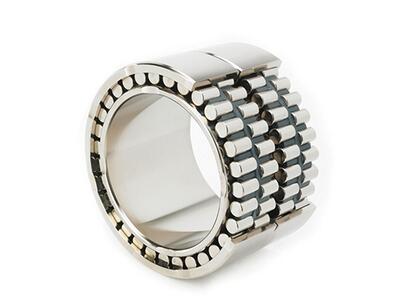1.The principle of bearing matching
(1) The bearing must be well supported in the circumferential direction in order to give full play to the bearing capacity.
For this reason, tighter fits should be adopted for both the inner and outer rings. The ferrule is a thin-walled part. When the matching gap is large, the ferrule will bend and deform after being loaded, which will affect the internal load and stress distribution, resulting in stress concentration. At the same time, the deformation of the ferrule also affects the accuracy of rotation.
(2) The ferrule subjected to rotating load cannot slide along the circumferential direction on the mating surface. However, the ferrule under a fixed load should be able to produce a slight rotation and slowly change the loaded area.
(3) For the non-separable bearing supported by the moving end, a ferrule (usually an outer sleeve) should be allowed to move axially relative to the mating surface, and the fit of the ferrule should be looser.
(4) It is not allowed to cause the bearing clearance to be negative or even the rolling support body to be stuck due to the large amount of fit interference.
(5) The matching parts must meet the required accuracy. The bearing ring is a thin-walled part, and the opening and closing error of the journal or hole will be transmitted to the raceway, which is equivalent to reducing the accuracy of the bearing.
(6) The bearing is easy to install and disassemble. With this roller bearing, the ring follows a heavy rotating load, but due to frequent assembly and disassembly, a loose fit is also selected.
2.The fit of the bearing, the shaft and the housing hole
The matching of the bearing and the shaft adopts the basic hole system, and the matching of the bearing and the housing hole adopts the basic shaft system. The matching of bearings and shafts is different from the tolerance matching system used in the machine manufacturing industry. The inner diameter tolerances of bearings are mostly negative tolerances. Therefore, under the same conditions, the inner diameter of the SKF bearing is tighter than the usual fit. Although the tolerance of the outer diameter of the bearing is also a negative tolerance, its tolerance value is different from the general tolerance system.






